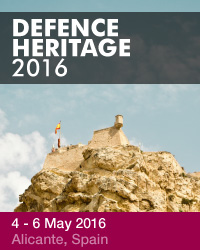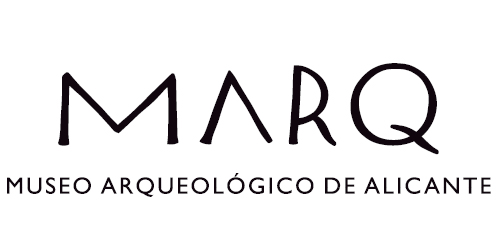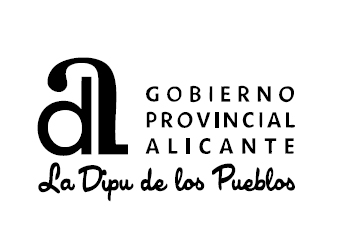Defence Heritage 2016
3rd International Conference on Defence Sites: Heritage and Future
![]()
4 - 6 May 2016
Alicante, Spain
Overview

The third International Conference on Defence Heritage took place in Alicante, co-organised by the University of Alicante, represented by ProfessorsVictor Echarri and Angel Gonzales-Aviles, and the Wessex Institute of Technology, represented by Professor Carlos A Brebbia and Dr Celia Clark.
Reclaimed defence sites offer a range of opportunities to planners, architects and local communities to redevelop large areas, brining new life to often neglected parts of town. The Conference’s objective was to raise the knowledge of the scale, design and function of defence sites. It brought a better understanding of the issues raised by their redundancy and the implementation of different disposal processes for the land. Those opportunities are common to many countries and the papers stressed these common features and helped to share experiences of the transformation of defence sites to civilian ones around the world.
The Conference was opened with a keynote address by Dr Milagros Flores Roman on “ICOMOS Charter on fortifications; a draft open to discussion”.
Milagros has been President, since 2008, of ICOFORT, The International Scientific Committee on Fortifications and Military Heritage, which acts as a support to UNESCO in reference to the International Agreement on World Heritage in matters related to Defence Heritage.
She is a specialist in fortification for both ICOMOS and UNESCO and she is a member of the Governing Committee of ICOMOS in the USA.
Milagros has been President of ICOFORT since 2008, which is the International Committee for Fortifications and Defence Heritage, and acts as a support to UNESCO in reference to the International Agreement on World Heritage in matters related to Defence Heritage. She is a specialist in fortifications for both ICOMOS and UNESCO. She is a member of the Governing Committee of ICOMOS in the USA
She is author of several recent important publications related to San Juan Castles and Walls in the XVIII Century and the relationship between the fortifications of Cádiz and the Caribbean.
She has been decorated in Spain with the Cruz Blanca to Military Merit of the Spanish Army.
Milagros graduated in history at the University of Navarra in Pamplona and is known worldwide as a specialist in Colonial America, Defence Heritage in the Caribbean and Military Archives Research.
Opening of the Conference
The Conference opened in the unique setting of the Castle of Santa Barbara, located on a hill that dominates the city of Alicante. Alicante is one of the oldest cities in Spain. It prospered under the Muslims until the conquest by the Christians in the 1200s.
This was followed by a series of changes in the fortifications around the region, including the Castle of Santa Barbara. The main changes however took place during the 16th Century as a consequence of the advances in gun powder. A series of bastions were then designed by Italian military architects. These bastions resisted better the canon attacks and provided a wide angle of fire to the defenders.
The war of the Spanish succession fought by the British and French resulted in further modifications to the Castle. The British then in possession of the fortifications, carried out various important modifications, including building new cisterns to store rain water, essential to withstanding a long siege. This did not stop the French taking over the Castle after having built extensive galleries in the rock and blowing it up with a huge mine. (The English commander refused to surrender when warned by the French that otherwise they were going to explode the mine!)
Antonelli, an Italian military architect, then rebuilt the Castle under order of the Spanish Crown; also designing a series of other fortifications. They include a line of coastal towers that were used to keep a watch against pirates or other enemies. Those towers allow messages to be transmitted very quickly from place to place by a series of fires and smoke signals.
During the Spanish Civil War the Castle was used as a prison, first to hold rebel prisoners under the Republican government. Eventually, when the nationalists won the Castle they imprisoned the republicans instead.
Carlos explained that the main function of the Wessex Institute of Technology is to promote knowledge transfer in a wide variety of fields.
The particular area of WIT’s research expertise is the development of better computer tools for engineering and scientific analysis. The range of applications of the tools is very wide and always motivated by the trends of industry and society in general.
Carlos showed some of the applications of WIT tools in areas as diverse as offshore engineering, the food industry, biomedical problems, electromagnetics applications, aerospace and a number of forensic analysis, trying to analyse catastrophic failures. The variety of applications, Carlos stressed, demonstrates the way in which WIT works, helping different organisations in multiple ways.
Another important area of activity for WIT is the publication of advance research papers for conferences and journals. These papers, which are now offered Open Access to increase their dissemination, are the basis of the WIT Transactions and Journals published by WIT Press.
Defence Heritage has provided the occasion to launch the new International Journal on Heritage Architecture, the first issue of which was distributed to the delegates. Carlos hoped that the Journal would fill an important role in the literature. It is the by-product of several meetings organised by WIT, including – in addition to Defence Heritage – one on Structural Repairs and Maintenance of Heritage Architecture and another on Islamic Heritage.
WIT has in its small way worked to preserve the architectural heritage of Southampton, a town still with a rich Georgian architecture. WIT recently completed the renovation of a Georgian building and its sympathetic conversion into residential flats.
Finally, Carlos pointed out the importance of the Conference programme for the interchange of ideas and knowledge transfer. WIT Conferences stress inter-disciplinary aspects and are of a very international nature.
WIT has collaborated with the University of Alicante for nearly 15 years, during which different publications, conferences and research projects have been successfully completed.
It was in Alicante in 2002 that a Conference was held under the Honorary Chairmanship of Ilya Prigogine, Nobel Prize Winner for Chemistry and an inspiring figure in modern chemistry, physics and ecological systems. Following his death in 2003, WIT and the University of Siena instituted the Prigogine Award, the 2008 event also held in Alicante.
Invited Presentations
There was a series of invited presentations to enhance the Meeting, ie:
- "Synthesis of the evolution of the fortifications of Castle of Santa Barbara in Alicante from its origins to the eighteenth century”, by Isabel Perez Millan, University of Alicante, Spain
- “Engineer Leandro Badarán’s project to safeguard the fortresses of Alicante in 1794”, by Victor Echarri, University of Alicante, Spain
- “Spanish fortifications in the Phillippines. Inception, evolution and current state of Cavite fortified city” by Carlos Rubio-Bellido, University of Bio-Bio, Chile
- “Reuse of Spanish civil war air-raid shelters in Alicante. The R46 balmis and R31 seneca shelter” by Angel Benigno Gonzales-Aviles, University of Alicante, Spain
- “Managing and converting defence sites in difficult locations” by Paul Davies, Paul Davies Architects, Australia
- “Interdisciplinary contribution to the protection plan of the fortified old town of Cagliari (Italy)” by Donatella Fiorino, University of Cagliari, Italy
- “Venice Arsenale: tourist magnet and the return of innovation” by Celia Clark, Wessex Institute of Technology, UK
- “Heritage concerning the water resources usage in the ancient Roman Empire defence sites” by Dan Constantinescu, Polytechnic University of Bucharest, Romania.
Other papers presented at the Meeting covered a variety of topics; a selection of which were published in a special issue of the International Journal of Heritage Architecture.
The Meeting presented many opportunities for the delegates to discuss topics of common interest outside the Conference room as well as during the sessions.
Conference Dinner
The Conference banquet took place in the Royal Regatta Club of Alicante, a well known institution, located on the waterfront with beautiful views of the Marina. The menu consisted of a series of typical starters, followed by a fish rice prepared with local vegetables. The main course was fillet mignon. The dishes were accompanied by local wines produced in the caterers’ own vineyards.
The friendly atmosphere and excellent service contributed to the success of the event and a high level of interaction between the participants. They also had lunch together, as well as extended coffee breaks and other social activities.
At the end of the banquet, Carlos thanked the delegates for their participation and in particular, the University of Alicante for hosting the Conference. Alicante, Carlos said, is one of the nicest and friendliest cities in the whole Mediterranean, still largely understood as a business or tourist attraction.
Closing of the Conference
The Conference was closed by Carlos who referred to the continuous evolution of the Meeting since it began in Portsmouth in 2012. The quality of the papers, Carlos said, has improved all the time, as well as the discussions.
It is also a very friendly meeting where the delegates interact with each other and has led to many joint projects and common initiatives.
Carlos reminded the authors that selected papers were to be published in the International Journal of Heritage Architecture and that they will be permanently archived in the WIT website in Open Access form, which means that they will be widely available. This ensures the widest possible dissemination for the work of this Conference.
Carlos ended by inviting the delegates to visit the Wessex Institute Campus next time they are in the region, which would give them a better appreciation of the work carried out at WIT.
Conference Proceedings
The selection of papers has been published in a special issue of the International Journal of Heritage Architecture (Vol 01, No 02, 2017). All papers are available open access on our website (witpress.com/elibrary) from where they can be downloaded free of charge.
Related conferences
- STREMAH 2017, Istanbul, Turkey, 9 - 11 May, 2017
- Sustainable City 2017, Seville, Spain, 18 - 20 September, 2017
- Sustainable Development and Planning 2017, Bristol, UK, 27 - 29 June, 2017





 Wessex Institute
Wessex Institute